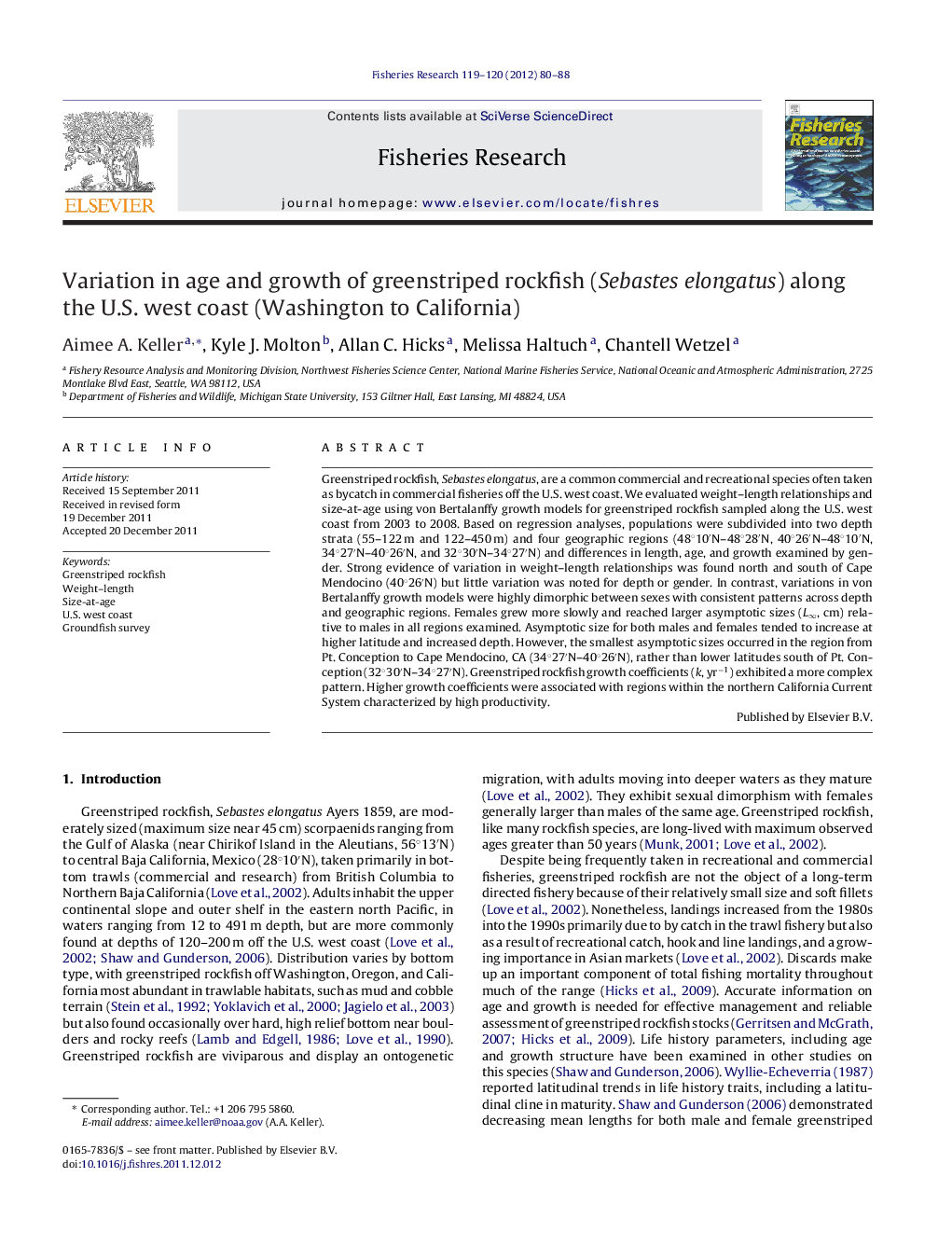| Article ID | Journal | Published Year | Pages | File Type |
|---|---|---|---|---|
| 4543391 | Fisheries Research | 2012 | 9 Pages |
Greenstriped rockfish, Sebastes elongatus, are a common commercial and recreational species often taken as bycatch in commercial fisheries off the U.S. west coast. We evaluated weight–length relationships and size-at-age using von Bertalanffy growth models for greenstriped rockfish sampled along the U.S. west coast from 2003 to 2008. Based on regression analyses, populations were subdivided into two depth strata (55–122 m and 122–450 m) and four geographic regions (48°10′N–48°28′N, 40°26′N–48°10′N, 34°27′N–40°26′N, and 32°30′N–34°27′N) and differences in length, age, and growth examined by gender. Strong evidence of variation in weight–length relationships was found north and south of Cape Mendocino (40°26′N) but little variation was noted for depth or gender. In contrast, variations in von Bertalanffy growth models were highly dimorphic between sexes with consistent patterns across depth and geographic regions. Females grew more slowly and reached larger asymptotic sizes (L∞, cm) relative to males in all regions examined. Asymptotic size for both males and females tended to increase at higher latitude and increased depth. However, the smallest asymptotic sizes occurred in the region from Pt. Conception to Cape Mendocino, CA (34°27′N–40°26′N), rather than lower latitudes south of Pt. Conception (32°30′N–34°27′N). Greenstriped rockfish growth coefficients (k, yr−1) exhibited a more complex pattern. Higher growth coefficients were associated with regions within the northern California Current System characterized by high productivity.
► Weight–length relationships for greenstriped varied geographically but not by depth or gender. ► von Bertalanffy growth models were highly dimorphic between sexes. ► von Bertalanffy growth models exhibited consistent patterns across depth and regions. ► Females grew more slowly and reached larger asymptotic sizes (L∞, cm) relative to males. ► Asymptotic size for males and females tended to increase at higher latitude and greater depth.
